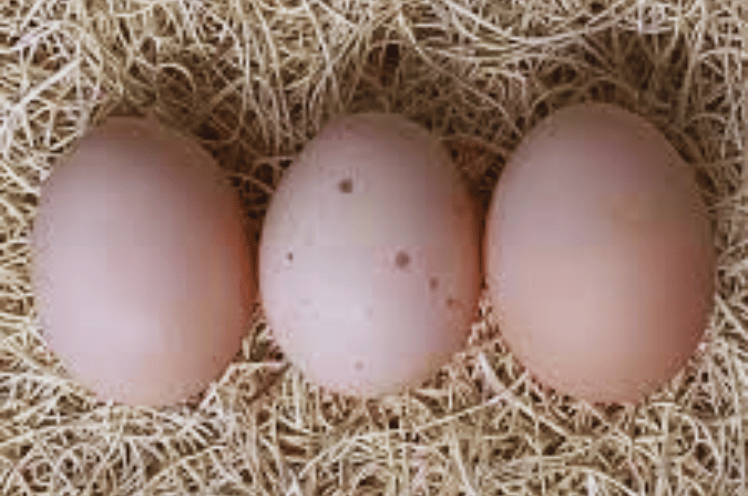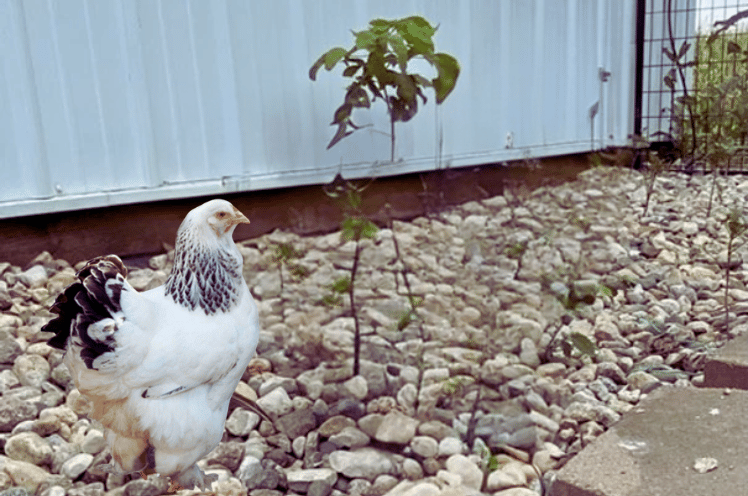The Light Brahma chicken are a beautiful type of the Brahmas, known as the “King of Chicken Breeds.” It’s hard not to fall in love with this bird because of its beautiful black and white hackle feathers and tail and its clean, classy look.
But do you think this huge bird would be a great addition to your flock? The best way to answer this question is to get information about this breed’s history and attitude.
So, this guide will take you through their world to find these fluffy things:
- Background to understand creation of this breed.
- personality and character to see how it acts around other chickens.
- Performance in terms of egg-laying and meat production is important to see if you can make money with these birds.
As a treat, we’ll also give you some care tips to ensure you raise Light Brahma in the best way and place. Let’s get right to it!
Light Brahma Chicken Background and History
The history of these old feathered chicken with striking feather designs is controversial because there aren’t many solid facts about this breed.
However, Brahmas is synonymous to “Shanghai” in the middle of the 1800s, so many people think this breed comes from Asia.
People think it’s a mix of a Malay and a Cochin bird. The birds did make it to Shanghai, China, though, thanks to US Marines. This is why the breed was named after the city. After many years, when the bird got to the US, it was cross with the Grey Chittagong, an Indian breed. This had a big effect on Brahma’s stamped head and comb.
The Rise of Brahma Chicken
The same year, chicken farmer George Burnham gave Queen Victoria nine “grey Shanghai.”
The queen loved this breed because it was so pretty. Because of this, Brahma chicken became more famous, and its price went up from $12–$15/pair to $100–$150/pair.
Light Brahma was one of the first breeds accepted by the Poultry Club in 1865. It was listed along with Dark Brahma in the first British Poultry Standard. In 1874, the American Poultry Association let the Light and Dark Brahma join.
Brahma Chickens Downfall
People in the US like these birds so much that they became a heritage breed. But in the 1930s, when meat makers and egg layers took over the market, they lost their style. Heritage breeds are becoming more popular, which is good news for the Brahmas because they got off the “watch” list. It is now one of the species that is “recovering.”
Light Brahma Chicken Characteristics and Appearance
If we say, “Light Brahma face,” your card will never be turned down! Believe us, we mean it! If you want proof that this Brahma version looks great, here it is.

Chicks
Most light Brahma hens are dark grey with a bit of yellow on their heads. The legs of a Light Brahma are also yellow, and the picture below shows how cute they are as eggs hatch.
Adults
These calm birds have long, strong legs and bodies that are wide and deep. Their breasts are big. Their feet look big and flappy because they have a lot of soft feathers on them. Brahma feather has a lovely contrast of black and white but mostly white with a lovely greyish undertone. You can also get buff and dark Brahma chicken.
The light Brahma’s hackle feathers have a beautiful black stripe running through them. They also have some light stripes on the seat area. Their tail is black, but there are white feathers inside it.
Their beautiful, flawless look is finished off with a pea comb, a beetle brow, and a short, strong mouth.
Light Brahma Chicken Size
We already said that people think of them as gentle giants. You might then ask, “How much do light Brahma hens weigh?” Like other Brahmas, this type can grow up to 30 inches tall. A Light Brahma hen weighs about 8 pounds, and a Light Brahma bull weighs about 10 pounds.
On the other hand, Light Brahma Bantam roosters weigh about 38 oz, while hens weigh about 34 oz, making them a bit smaller.
Light Brahma Chicken Personality and Temperament
Light Brahma hens are calm and easy to handle. These chickens are even cuter because they are friendly with people and can be taught to feel safe around other people. These big chickens, called Brahmas, might be scary at first, but treats can help you train them! They will quickly grow to love you.
Also, they can handle being locked up pretty well because they are calm. They can do well in small yards, just like Brahma’s Cochin ancestors. Also, they aren’t very flighty and have a hard time flying over buildings and low walls.
These birds are also pretty good at cuddling. They’d love to sit on your laptop. Light Brahmas are a beautiful breed of chicken that will make great pets for kids. You can find them anywhere.
That said, Brahma cockerels crow too, just like other birds. Their noise level is better than some other breeds’. Light Brahma hens are the best ones to keep if you want your Brahma group to be quiet.
Light Brahma Chicken Egg Laying Capabilities
For their size, these chickens lay good eggs, and they lay better eggs in the winter than other types.
How many eggs does a light Brahma lay, though?
A Brahma hen can lay three to four eggs every week. This breed also lays eggs from October to May, when most other types are taking a break for the winter.
Many people know that they get broody in the early summer and don’t really care about the state of their eggs the rest of the year. They often sit on their eggs as a broody hen between April and June.
Light Brahma eggs are brown and about the size of a pencil. These hens can take up to seven months to reach full size and start laying eggs, which is not ideal.
Light Brahma eggs can be bought online or at chicken farms in your area.

| Egg size: | Medium |
| Egg color: | Brown |
| Starts laying: | 6 to 7 months |
| Light Brahma eggs produced/week: | 3 to 4 |
| Total eggs produced/year: | 150 to 200 |
Light Brahma Chicken Meat Production
For their meat, The chicken were very popular from the 1850s to 1930, when they were at their most famous.
If they are going to be used as broilers, these chickens are picked as early as 8 to 10 weeks old. They can already feed a family of four because they are big and fully grown at that age.
That’s why farmers and homesteaders loved them as a meat bird.
Light Brahma Chicken Common Health Issues
Most of the time, light or Black Brahma chickens is healthy. But, like other Brahmas, they can be prone to these things:
Lice and mite infestation
Light Brahma has thick, tight feathers that make a great place for lice and mites to hide. So, keep an eye out for lice and mites, especially the scaly leg mite, which has feathers and can be painful.
Bumblefoot
Heavy breeds, like the Brahma, can also get bumblefoot, which is caused by staphylococcus bacteria. You can usually find it on the toes, hocks, and pads of a chicken’s feet. It looks like a pus-filled cyst with a black scab over it.
Signs of bumblefoot include being unable to walk, being lame, or swollen.
Infection
If a giant chicken jumps off its roost, it might hit something sharp. That object could get pushed into their foot because they’re heavy, which makes them more likely to get an infection.
Frostbite
The winter is another time when Light Brahma chickens get sick. During this time of year, their feet could get frostbite if they are wet or muddy.
Little mud balls may form on their toes. If you don’t take care of them right away, they can damage their skin and tissue.
Is Light Brahma the Right Chicken For You?
If you like big, fluffy hens with beautiful white feathers and a calm personality, this type might be the one for you.
It’s a great bird to add to your group and a good enough meal bird for your family. But chickens can also be pets!
They have a sweet, cute nature and can lay eggs even in the winter, which are both very useful traits.
But before you buy them, you should make sure you have strong roosts, big nest boxes, and a cosy place for them to live.
Pros:
- Big enough and with enough meat
- confinement-tolerant
- Kind to kids
- During the winter, lay eggs.
- Not flying
- The one-of-a-kind, striking look
- Hardy in cold weather
Cons:
- Can’t easily get away from enemies
- More likely to get cold, lice, and mites
- Eats a lot of feed
- It takes five to seven months before it starts to lay
Light Brahma Profile Summary
| Color: | White (with grey undertone) |
| Rooster: | 10 pounds |
| Hen: | 8 pounds |
| Lifespan: | 5 to 8 years |
| Temperament: | Calm and docile |
| Toleration for Confinement: | High |
| Escape level from predators: | Low |
Final Thoughts About Light Brahma Chicken
Even though Light Brahmas are very big, they don’t usually act mean to their group.
This chicken is calm and friendly, even around kids, which makes it a great pet bird. The fact that these chickens lay eggs and produce meat also means that they do well in these areas.
It might not be easy to find light Brahma cockerels and pullets, though, since the breed is still improving. But Light Brahma chicken is worth it, and they’re beautiful to look at! Do you have a Light Brahma hens? Please share your stories and advice below to help others see how great it is to keep this breed alive.

